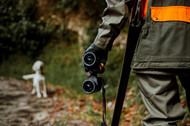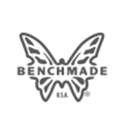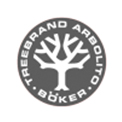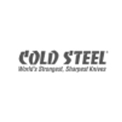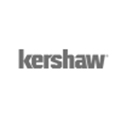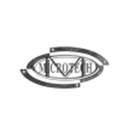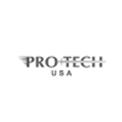How to Choose a Kershaw Hunting Knife
26th Dec 2023
For Kershaw, folders are king. This is, after all, the company that brought the world SpeedSafe Assisted Opening Technology.
While Kershaw might be commonplace among EDC junkies and other folder fanatics, don’t count Kershaw out of the fixed game.
Many quality fixed blades fall under the Kershaw umbrella. So while you might think first of a Buck, Cold Steel, or OKC for hunting, a Kershaw hunting knife will deliver quality.
Here’s how to choose the perfect one.
Size and Weight
Size and weight are two of the most important considerations when choosing a Kershaw hunting knife.
Remember, for most applications, you don’t need a really huge knife. Many excellent hunting knives have blades in the 3” to 4” ballpark. You can break down the largest game with a knife this small, even if it will take a long time to separate the joints on large game.
The larger the blade, the more unwieldy and imprecise it will be in small spaces, such as in the body cavities of small to medium game - another reason smaller is often better.
Also, bigger knives weigh more. This doesn’t matter for some hunters, but for others, especially Western hunters that might be afield for days if not weeks at a time, ounces become pounds.
So keep that in mind. There is no right or wrong answer, but these are things that have to be thought through.
Blade Profile and Intended Use
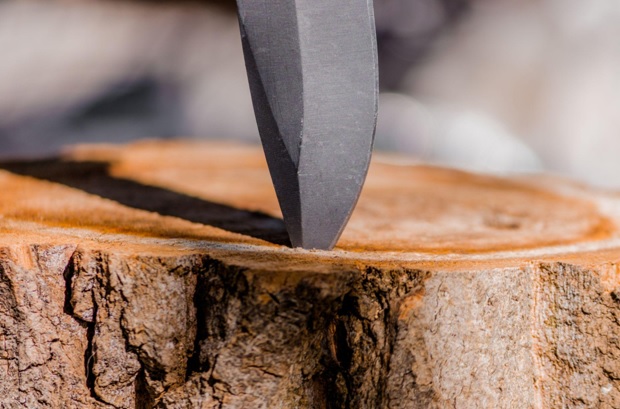
The blade profile - that is, the blade shape - is another thing you should take into account before buying a Kershaw knife for hunting. And, this is one of the most important things that should be weighed in the decision.
This is because what makes a hunting knife a hunting knife, fundamentally, is how you intend to use it, and why.
Most general-purpose hunting knives are designed with drop point or spear points, or, less commonly, clip points. Both the former entries are better for all-purpose applications, whereas clip points are better for precision processing. It comes at a price, though, as clip point knives are fairly fragile.
Beyond this, there is a wide range of knives that are designed with specific functions in mind. For instance, there are skinner knives, also sometimes referred to as “‘muk” or “nessmuk” knives, which have a wide blade profile, with a swept belly and a stout point. These are used primarily for skinning.
Other special styles include filet knives, boning knives, and capers, all of which are intended to remove skin and separate specific cuts from the bones to which they are attached.
Another common profile is a cleaver-style, or in some instances, a sheepsfoot-style blade, which has either a downturned point, or which lacks a point entirely or has a square nose. These are primarily intended for separating, trimming, and processing large cuts of meat.
Then there are some profiles that just don’t make a lot of sense for hunting knives. Avoid needle points, as these are designed for piercing and are fragile. You’re more likely to break the knife than anything.
Tanto points are strong, but the integrity of the tip is not necessary; also, the sharp angle at the point makes sweeping cuts difficult. Stick with a skinner or a ‘muk knife for these.
Also, large, unwieldy camp knives, in excess of 6”, rarely make practical hunting knives, regardless of blade profile.
Blade Steel
In addition to determining based on size, weight, and blade profile, you also need to consider steel.
There are three main considerations you need to make, with respect to edge retention, toughness, and corrosion resistance. The first and last items are the most important, as you will be unlikely to beat up a hunting knife.
Edge retention is how long a knife will stay sharp. CPM super steels like S90V and S30V both produce razor-sharp, long-lasting edges, but they are very hard to resharpen. On the flipside, steels like 8Cr13MoV and 1095 will take a sharp edge, but they are usually soft enough to easily resharpen.
Corrosion-resistance is another thing to consider. Steels that are low in chrome, like 1095, will rust in a heartbeat, as will most tool steels, like D2. Alloys like AUS-10, AUS-8, 420HC, Nitro-V, and 14C28N are all very corrosion resistant.
One thing to note is that nearly any steel alloy can make a good hunting knife, provided you care for it properly. The problem with steels that rust easily is that you must remember always to clean, dry, and then oil them before putting them away. Even a short trip in the sheath for a bloody knife can create a lot of flash rust.
Sheath and Scale Material Considerations
Just like the steel you choose, you need to make sure you choose a knife that comes with an appropriate sheath and scales.
For instance, if you use your knife in a marine environment (say you’re a duck hunter) or you know for certain that there will be prolonged periods of time in which you will need to remain in the elements with your knife, then natural scales, like wood, bone, and horn, are a bad idea. These swell, warp, crack, and can even rot.
Synthetics like G10 and Micarta, or even carbon fiber, are much better in these situations, as are GFN (glass-filled nylon) and aluminum scales. These require basically no maintenance.
The sheath also matters, not only because natural materials like leather can rot, but because they will trap moisture and can cause the blade to rust prematurely. While leather looks nice, if you’re going to be in the elements a lot, synthetics like nylon or Kydex might be better.
What Are Some Good Options?

With all of this said, here are a few good options in a Kershaw hunting knife, all for different reasons.
- Kershaw Deschutes Caper
- Kershaw Deschutes Skinner
- Kershaw Brace
- Camp 5 (a bit large but could still be a good Kershaw hunting knife)
And a few folders:
Get Your Next Kershaw Hunting Knife Here
These are some of the things to consider when shopping for a new hunting knife. Hopefully this article helps with the process of decision-making.
Looking for your next Kershaw hunting knife? Get it here and enjoy free shipping in the United States.

